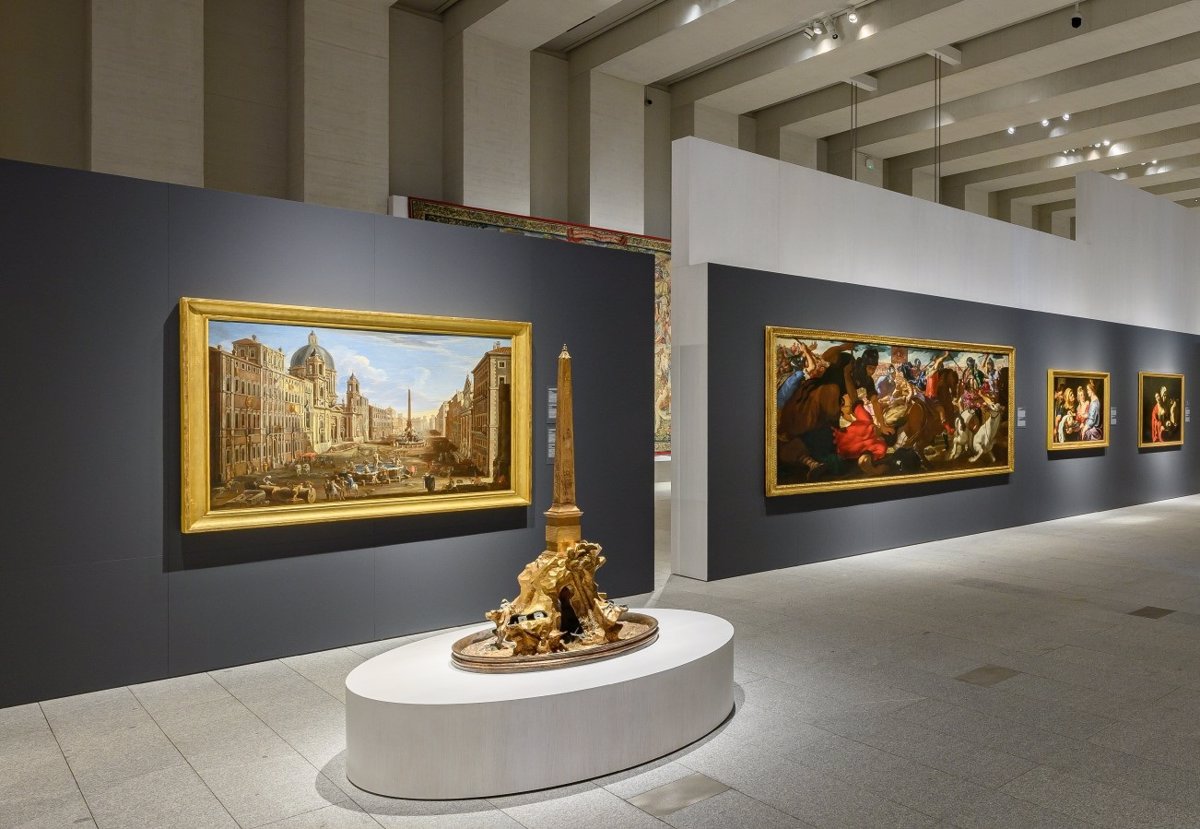National Heritage has recovered a valuable sculpture by Bernini that was going to be auctioned thanks to a court ruling that sets a precedent in the protection of Spanish heritage. Is about ‘The personification of the Ganges River’ that is part of the ‘Fountain of the Four Rivers’ by Gian Lorenzo Bernini which is currently exhibited in the Gallery of the Royal Collections.
The sculpture was withdrawn from the auction, in which it was on sale with a price of over 2,000 euros, after being declared unexportable by the Ministry of Culture. According to National Heritage, it is “a historic judicial ruling in which the State Attorney’s Office and the National Police have played a fundamental role“.
The allegorical sculpture was located in November 2021 within a lot that was going to be auctioned at La Suite Subastas in Barcelona. Under the name ‘Vulcano’ and within lot 54, it was described as an independent piece made of mercury-gilded bronze and belonging to the Italian school, “possibly Florence”, following the models of Pietro Simoni da Barga. They calculated that it had an estimated value of between 2,000 and 2,400 euros.
On November 24, 2021, the Ministry of Culture and Sports declared this work unexportable in a precautionary manner, based on the Spanish Historical Heritage Law, and notified the ministerial order to the room, at which time the auction house withdrew the lot. where the piece was included. At that time, the Historical Heritage Brigade of the National Police began investigations to find out the route of Bernini’s Ganges.
The work was purchased from an individual by a property removal company, then went through an antique dealer and ended up in the Barcelona auction house. As there was no documentation to support its origin, the Barcelona Court of Investigation was requested to transfer it to the Royal Palace of Madrid to examine it and thus determine its origin.
THE FIGURE “FITS LIKE A GLOVE” ON THE ORIGINAL BERNINI MODEL
Once in the Royal Palace of Madrid, The technicians from the Directorate of the Royal Collections of National Heritage were able to verify that the small figure fit like a glove in the original model by Gian Lorenzo Bernini. The studies carried out revealed that the piece has the same metal composition and shares the same casting technique as the ‘Fountain of the Four Rivers’.
In parallel, National Heritage compiled extensive documentation that demonstrates the historical connection of both pieces. Cosimo de Medici mentions it for the first time in 1668 as a decorative piece in the office of Charles II. After being saved from the Alcázar fire in 1734, the sculpture was kept “on the mezzanines of the new Royal Palace awaiting restoration and destiny“, according to the 1773 inventory preserved in the General Archive of the Palace.
Once the investigation was carried out, National Heritage, represented by the General State Attorney’s Office, filed a lawsuit to claim the belonging of Bernini’s piece to the Royal Collections, arguing that “the inalienable, non-seizable and imprescriptible nature of these assets prevents their legal alienation”, as stated in Law 23/1982 regulating National Heritage. The Court of First Instance number 42 of Barcelona has “reliably recognized its continued belonging” in the inventories of royal collections held by National Heritage with a final ruling published on May 20, 2024.. He has also declared that the sculpture is “an indivisible part of the work as a whole” and, therefore, orders the company Fine Arts Dealers SL to deliver the figure to the institution.
The model represents the fountain with obelisk in Piazza Navona in Rome, made in cast and gilded bronze by Gian Lorenzo Bernini between 1651 and 1665. In the original work four rivers were represented: the Nile in Africa, the River Plate in America , the Danube in Europe and the Ganges in Asia. They are allegorical figures that later disappeared without any record of it.
The last inventory where the entire piece appears is from the end of the 19th century. Bernini made several models of this fountain and, according to preserved documentation, he cast one in silver for a relative of Pope Innocent X., who was pleasantly surprised by the artist’s work. Given the good relations between the Pope and Philip IV, it is very likely that this model was a diplomatic gift.
